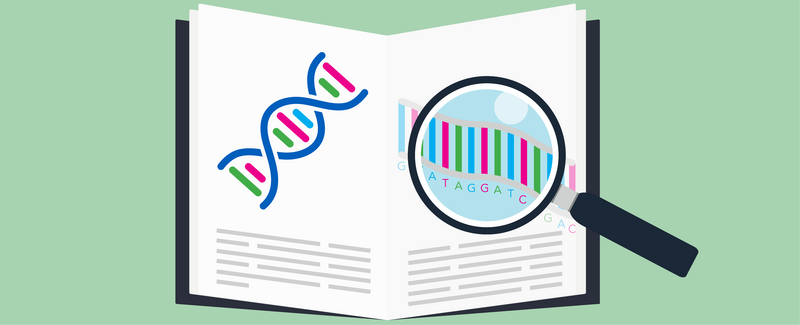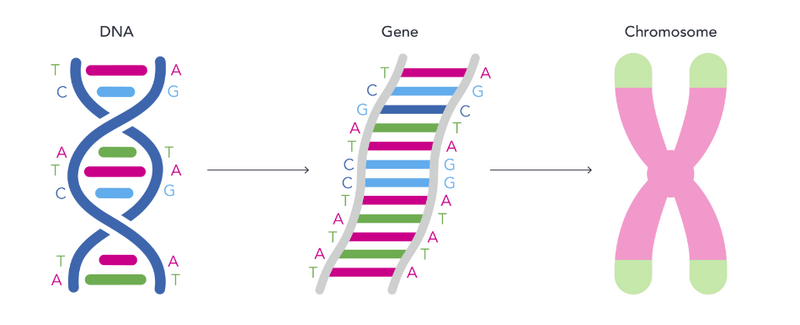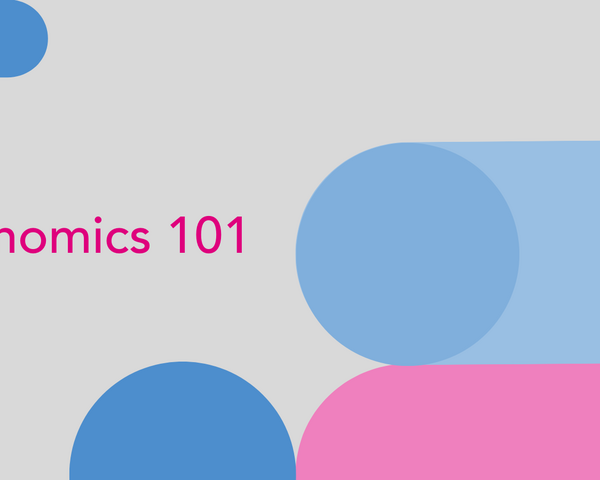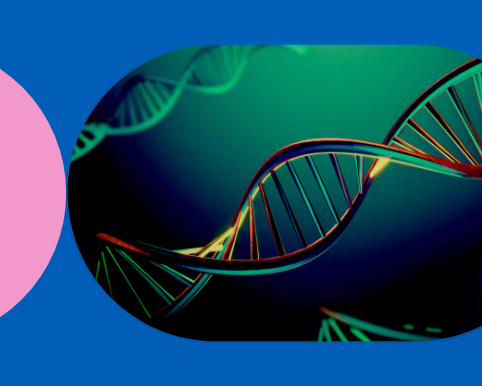Genomics 101: DNA, genes, and chromosomes, what's the difference?
By Florence Cornish onIn this series, ‘Genomics 101’, we go back to basics and explore some of the most important topics in genomics. In this blog, we explain the difference between DNA, genes and chromosomes.
First things first, what is DNA?
DNA is a molecule found in all living things. It carries the genetic information we need to survive, function and grow, like an instruction manual for our body.
DNA sequences are made of a 4 different ‘bases’, which we represent using the letters A, T, C and G.
The cells in our body can read this sequence of letters, almost like reading a book, and produce all the different proteins we need.

What is a gene?
A gene is a section of DNA that contains a specific instruction. This instruction provides information about our bodies, such as our development, appearance, or the way we function.
For example, humans have genes that determine our eye colour. The sequence of letters, or bases, in these genes codes for a certain amount of pigment to be produced.
People with genes that code for lots of pigment will likely have brown eyes, and people with genes that code for less pigment will likely have blue eyes.
So, how many genes do we have?
Scientists aren’t completely certain on the exact number of genes we have, although estimates suggest we have around 20,000 pairs.
One gene from each pair comes from our mother, and the other one comes from our father.
Are both genes in a pair the same?
Not exactly. Whilst both genes in a pair contain information about the same instruction, the genes will have a slightly different sequence of DNA bases.
If we think about the example of eye colour above, both genes in the pair will code for eye colour, however, one might code for blue eyes, and the other for brown eyes.
In this specific case, the person will most likely have brown eyes, because the gene for brown eyes is what we call ‘dominant’ - which means it is always expressed even if only one copy is present. However, not all pairs of genes work in this way.
Sometimes both genes in the pair are fully expressed, or sometimes they may blend together to produce an intermediate of the two.
Either way, it is this combination of genes from our mother and our father that makes each of us unique!
Can changes in genes cause disease?
Most of the time changes in our genes are harmless. Sometimes, however, they can cause problems for our health, such as rare genetic conditions and cancer.
There are estimated to be over 7000 rare conditions, around 80% of which have a genetic component. This means that research into our genes is essential to better understand these conditions, and how we can treat them most effectively.
You can find an example of research in a previous blog about a neurodevelopmental disorder called ReNU syndrome.
In addition to many rare conditions, cancer also occurs because of changes in our DNA. This means that genetic research can help us better understand cancer, as seen in a previous blog on improving the way we detect tumours.
Overall, the relationship between our genes and our health is complicated, and scientists are working all the time to try and understand it better.
So then, what is a chromosome?
Chromosomes are structures inside our cells that hold all of our genetic material.
They are formed of long strands of DNA wrapped tightly around proteins, almost like coiled up thread.
If we were to stretch out all of the DNA in one of our cells like a piece of string, it would be almost 2 metres long. Chromosomes are vital to keep this DNA compact and secure, so that it can fit inside our cells.

How many chromosomes do we have?
Humans have 23 pairs of chromosomes in every one of our cells.
One chromosome in each pair comes from our mother, and the other from our father. This is how we get 2 copies of each gene, as we mentioned above.
The only exception to this rule, are what we call the sex chromosomes. These, as you might have guessed, determine a person’s sex.
In females, both sex chromosomes in the pair are ‘X-chromosomes,’ whereas in males, the pair is made up of an X chromosome and a Y chromosome.
When it comes to the sex of a child, the mother will always pass on one of her X chromosomes, where as the father can pass on his X or a Y, ultimately determining the sex of the child.
You can learn more about the X and Y chromosomes in our previous Genomics 101 podcast: How does X-linked inheritance work?
And finally...
Information about DNA and genes can feel complicated, but there are lots of simple resources you can use if you want to learn more.
Checkout our other Genomics 101 blogs, or our Genomics 101 podcast series.


